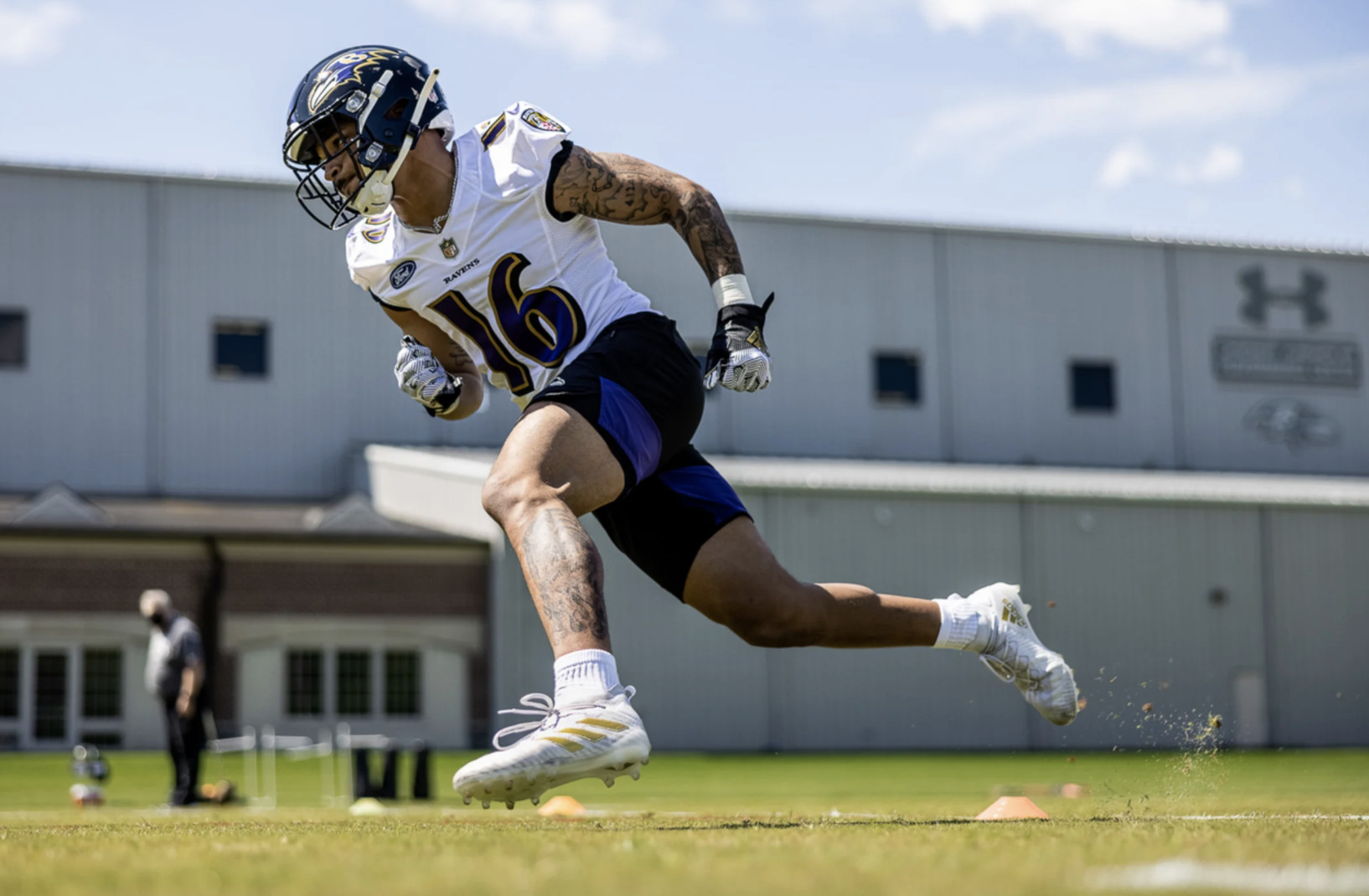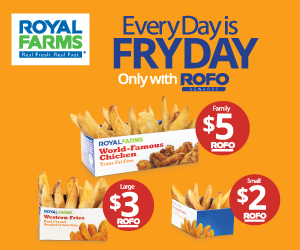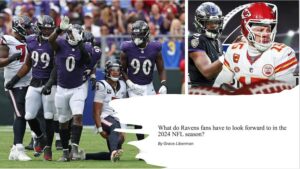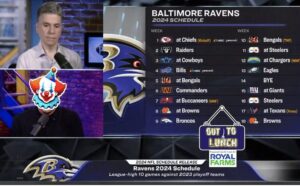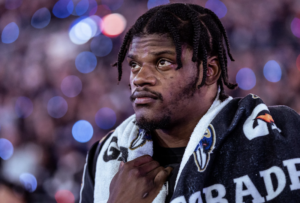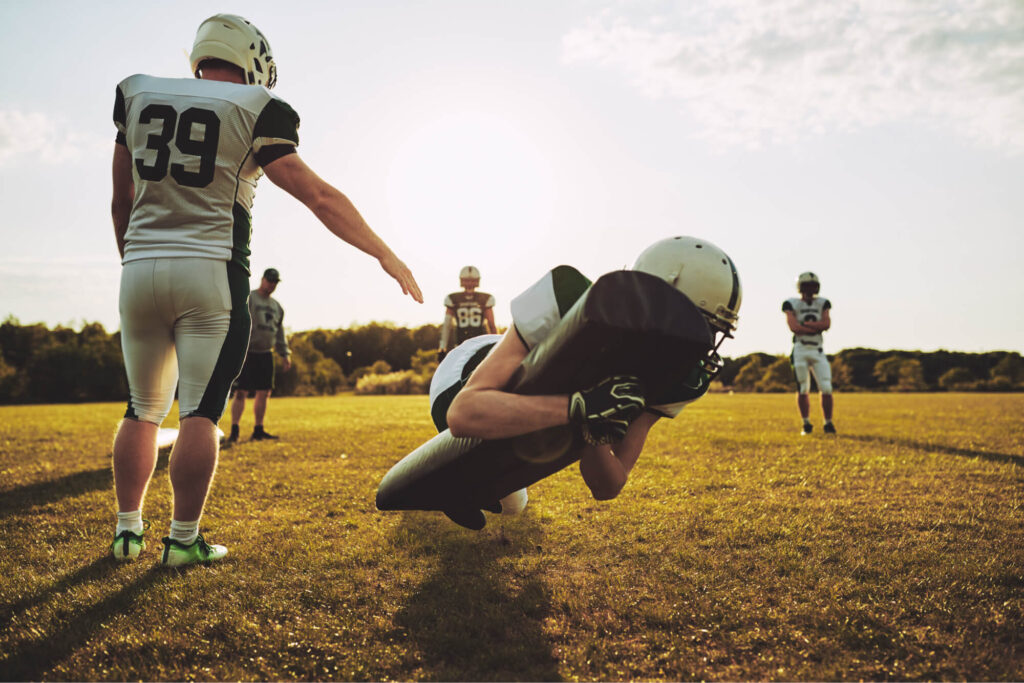The Ravens have many wonderful traditions. One of my favorites, purely for its go-against-the-grain, some-men-just-want-to-watch-the-world-burn nature, is the draft-double-dip.
(I promise to go lighter on the hyphens and the alliteration from here on in.)
“Why did we take another Tight End?!” you’ll hear fans exclaim, as the Ravens forgo their favorite prospect for a 25-year-old Tight End from Brigham Young University who ultimately helped them win a Super Bowl.
Like his predecessor Ozzie Newsome before him, Eric DeCosta loves to double dip at a position in the draft, sometimes when that position is a particular need and often, when it isn’t. The Best Player Available strategy, it turns out, doesn’t have any kind of rule that prohibits you from taking the best player available if you’ve already addressed that player’s position in that draft.
But the Ravens have a curious added extra dimension to this tradition that I’m not sure they actually plan for. Though, they do acknowledge that the draft is a crap-shoot, so maybe they do.
The Ravens often have the second of their picks at a position in the draft out-produce their first.
Seriously, it’s happened a lot. With hindsight, you would have picked…
Mark Andrews over Hayden Hurst
Matt Judon over Kamalei Correa
Nick Boyle over Maxx Williams (Darren Waller was picked after both of these two in that draft)
Dennis Pitta over Ed Dickson
Marshal Yanda over Ben Grubbs (Maybe clutching at straws looking for a non-TE example; Grubbs was good too, but he wasn’t Yanda)
Dawan Landry over David Pittman (really scraping the barrel now)
Okay, so maybe it’s not that frequent, and maybe it’s mostly Tight Ends, but it’s happened more than you would think for a team that hits a high proportion of its early picks.
DeCosta has double dipped at Wide Receiver in all three of his drafts at the helm of the team. It’s why there was already a slight logjam at the position before he did it again this year. After that first pick of Rashod Bateman, it really did seem like another draft pick at the position would be a waste, or would at least push out one of the still-developing players on this roster.
Tylan Wallace, though, was way too good to pass up where they snagged him. I’m certain he was far higher on their board than the 131st pick at which they got him. He certainly was higher on my board.
The story of Wallace, when you told it in 2018, certainly would not have had you believe he would be picked outside the top 100 in the NFL Draft. As always with player evaluation, context is all important and this is even truer with Wallace than others, I would argue.
In 2018 as a sophomore, Wallace racked up 1489 receiving yards, good for top 10 in the nation, on 86 receptions – 12 of them going for touchdowns. If you limited this list to just the sophomores and freshmen in 2018, only Rondale Moore had more receptions and Rico Bussey more touchdowns. I’m painting a picture here, of Wallace as one of the most promising potential draft picks going into the 2019 season.
After eight sensational games in 2019, Wallace tore his ACL. If you want a peek at his production, taking into account the injury, the best statistic to look at would be yards per route run. This is an equalizer stat that shows relative production in less pass-happy offenses or if players don’t play a full season. Wallace’s mark in 2019 was 3.48, exactly the same as… Rashod Bateman (both of them nestled just a hair behind Devonta Smith and Jamar Chase.)
Wallace was a legit first-day, or at least second-day draft prospect before the injury.
His injury came in November 2019. ACL injuries suffered that late in the season often linger into the next season and cause at least some missed games. Wallace was back out there for their first game of 2020 against Tulsa.
This is where I have to explain that to simply refer to him as Wallace isn’t actually very fair to his twin, Tracin Wallace. Not quite as highly recruited as his brother, they both had high expectations of themselves coming into the Oklahoma State program. Unfortunately Tracin’s third ACL tear ended his career prematurely.
I do preach that athletes are humans and I’m not really sure the toll this would have taken on Tylan, who got to continue to chase his dream, but I’m sure it must have taken some. And I’m sure that suffering his own ACL tear, after watching the injury finish his brother, must have given some kind of weird mythological power to the injury in Tylan’s eyes.
I say all this to make the case that, if you only watched him in 2020, you likely aren’t doing enough homework on a kid who was spectacular for a season and more than a half before the injury, and who still came back against the odds to play in 2020 when an opt-out would have been far easier.
Let’s look at the tape though, to see what type of player Baltimore is getting. I’ll say up top, like Bateman, this is a very different type of receiver than we’re used to seeing the Ravens select.
One of the most important components of a good route runner is the route stem. All routes are run off of this stem and if you consistently tip your hand to the defender, showing what kind of route you’re running with variance in the initial vertical segment of your route, known as the stem, then you won’t be very successful, especially in the NFL. Jerry Rice preaches the importance of the route stem all the time. What you see from Wallace in his pre-injury film, is this consistent stem that sets up all of his route tree.
You see that consistent stem in the clip below from a 2018 conference game against Kansas State, but you also see him win with remarkable deceleration, another vital ingredient to receiver success in the NFL. Important context to this clip: Wallace had gotten behind the Wildcat defense a couple of times already, so they were leery of another deep beat. His body control to gear down so quickly is remarkable given his 4.5 speed. He’s certainly more of a linear, smooth, body-control type route runner than an explosive, wow-you-with-teleport-like-breaks guy, but he has more than enough tools in his box to get the job done.
You should also notice the small details on a play like this that set Wallace apart in terms of his football intelligence. He doesn’t continue to come back to the football, but that’s because he knows he can afford not to, with the cushion he’s gained from the snapping off of his acceleration, the cushion he already had from the defender pre-snap, the timing of the route and the throw, and his body control at the catch-point to shield the football. Why does he make all of these calculations and not keep coming back to the football? Because he stops at the first down marker – he wants to be a chain-mover.
He could add more salesmanship to his route, something he looked to have done at the Senior Bowl with pro coaching, understanding the importance of peeks back to the quarterback, but his route-running has developed over time in Stillwater too. Having said that, his body control and suddenness have been features of his game throughout. He has shown a consistent ability to keep the defender guessing and his routes offer few clues as to when his break will come. A good example is shown from 2020 here when he runs an efficient out-route against Texas, with great timing on the break and an economy of movement with no rise. He’s the receiver at the very top of the screen.
The next thing, and I’m certainly guilty of over-inflating the importance of this – there have been guys with adequate versions of this trait that have gone on to have success in the league – is his hands. Wallace has some of the best hands I have ever graded at the college level, and there are some catches he makes that he has absolutely no right to grab. If we’re talking technically – he has some of the pluckiest hands I’ve ever seen – not a body catch in sight. Wallace will frame the ball and catch as competently at full extension as he does in short quarters.
At the catch-point, it’s not just about his hands. He has excellent body control to put him in position to make the grab. He is as tough as the day is long, putting away contested catch after contested catch, particularly across the middle where he uses particularly excellent dino stems in a deadly consistent manner to come open frequently in the intermediate area of the field. He will brace for impact and always put the ball away amidst contact, as well as winning jump balls more than his fair share of the time. His ball-tracking is excellent and he would often have to adjust to wildly thrown balls, which he was able to do because of this. There are better examples of his ball-tracking and adjusting to the ball but this TV replay shows his eye discipline very well.
Put simply, his catch radius meant Oklahoma State QBs had a very large margin for error these past few years. Having said that, he won’t put every contested catch away – while you can see some spectacular examples on tape, you can also see he had a lot of opportunities for them and he missed some. This certainly isn’t a weakness; most of these weren’t drops and certainly not balls you expect him to come down with, but it’s worth taking into account when you do see his circus catches. They threw him a good number of jump balls when he was covered to allow him to see the volume to be able to make a ton of those. This also caused a small issue in his play which I’d like to see him iron out, which was a tendency to slow up in the middle of a deep route, as if he was anticipating a mistake from the QB that he would need to adjust to; it meant he was overthrown on a few occasions.
I like Wallace as a blocker. He’s physical and willing but you really want to see him add more finish to it. He doesn’t latch and drive, he’ll allow the defender back into the rep as the play progresses and he rarely plays through the whistle. I am not sure that will be acceptable for the Ravens and he’ll have to learn to play through the whistle if he wants to get on the field in this scheme. See this clip with great initial pop and aggression but little technique and finish. He’s the receiver at the bottom of the screen.
The big question marks for Wallace are his size and his release. Both of these are linked to his competition in the Big 12. We simply do not have enough evidence of a release package to know for certain if he can get off press at the next level. He was rarely pressed in the Big 12 and so it isn’t something we can say he can do. When he was pressed, he didn’t win emphatically or demonstrate any kind of release package – more just reacting to what the defender throws at him. I like his competitive toughness but not to the point where I’m comfortable making any kind of projection.
Tulsa tried to press him in 2019, as shown above, where he’s again the receiver to the very bottom of the screen, and he frequently showed an inability to defeat it. He lines up outside the numbers, but when they pressed him, he took himself to the sideline and off the field to beat it. All he ever tried to do was run around it and turned everything into a wheel route. I’m not willing to kill Wallace over it, because it clearly won’t have been a coaching point of emphasis in the Big 12, so while I don’t think we can say he can do it, I don’t think we can say he definitively can’t either. Nevertheless, the deceleration showed earlier to combine with his ball-tracking and deep ball prowess meant he got open a lot against off-coverage and took a lot of what Big 12 defenses so readily gave him.
On the plus side on this front, I did see some modest growth from Wallace as his career progressed. This clip from their 2020 game against Texas shows him using his hands to try and release, and contains an effort to get back on his route rather than simply giving the DB a wide berth. At the bottom of the screen again.
The Big 12 also doesn’t produce too many big-time NFL corners, and while he was able to bully defenders in this conference, the 5”11 size and just over 30 inch arms suggest he might not be able to be as physically dominant in the NFL as he was in the Big 12. Still, I can show you many examples on tape of when his body control, ball-tracking and competitiveness at the catch-point allowed him to overcome his physical limitations in this regard.
Wallace is certainly a catch-point extraordinaire, and despite his physical limitations, he’s competitive and tough with enough speed and suddenness to make a good NFL receiver. He’s not a blazer and he’s not explosive and he currently doesn’t have all the route running savvy you’d like to see from a guy without the elite physical tools, but he’s developing it. Mainly he just knows how to get open and put away the ball, from which you can’t go too far wrong. I think he’s a better wide receiver than Devin Duvernay at this point in their development, though Duvernay is ultimately a better weapon right now. If Wallace takes to Keith Williams’ and Tee Martin’s coaching – specifically on developing a varied release package – I think there’s a chance he can develop into a starting outside receiver in time.

